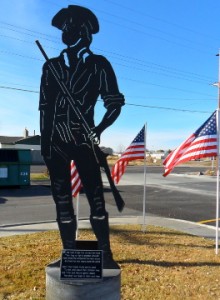05 January 2015 (10:38 UTC-07 Tango)/14 Rab al’Awwal 1436/15 Dey 1393/15 Yi-Chou 4712
“…Overlooked by the proponents of this plan are the implications for our country’s system of checks and balances, and ultimately the liberty of our citizens.
The Army’s layered rhetoric, designed to dupe Congress and the American people into believing its plan is best, consistently echoes a dangerous and loaded argument — the idea that state governors have no need for Apache helicopters.
If we accept that argument, we embark further down a slippery slope and there will be little to stop the Pentagon from taking all National Guard war-fighting equipment in the future. What will be next? Tanks, fighter aircraft, air tankers or field artillery? What about our M-4 and M-16 rifles?
The Army’s hasty declaration that the Guard does not need combat capability for state missions conveniently ignores the many reasons it’s here in the first place.
It’s the National Guard that defends the homeland. The Guard ensures the sovereignty of our airspace through fighter-alert missions throughout the country. The Guard is our initial crisis-response force for everything from natural disasters to terrorist attacks. And as a vital component of the ‘Total Army,’ the Guard fights and wins our nation’s wars overseas alongside active-duty service partners.
The most important reason is deeply rooted in the Constitution. Many of America’s Founding Fathers, studying the precedents set by the British and Roman empires, believed the greatest threat to liberty was a large standing army that they viewed as an unchecked power dangerous to a free republic.
They therefore gave Congress — the branch of government most representative of the American people — the power to raise and support armies in times of need. They also gave Congress the power to provide for the calling forth of the colonial militia, the predecessor to the National Guard, to suppress insurrections and repel invasions.
This division of power meant that power was checked and helped limit the blunders of a large centralized government by dispersing power to citizens through their state governments.
It stands to reason that the size of the Army’s active component should contract in times of peace. After Sept. 11, 2001, the Army swelled from 480,000 to 570,000 at the peak of the war while the other services maintained relatively consistent manpower levels. Today, the Army’s short-term solution has long-term consequences, as it wants to plunder combat-arms equipment and resources from its reserve component because presumably it’s difficult for them to accept postwar downsizing.
The real solution to the Apache debate is one that falls in line with the Constitution and provides adequate forces amid historic cuts to the defense budget. The Army must reverse its plan and divert soldiers and equipment from the active component to the National Guard, where they can be maintained at a fraction of the cost. America can keep its highly trained, combat-capable soldiers right here, where they are always ready, always there.
States do need Apache helicopters, and virtually every other capability found in the National Guard, because the people of a free republic need their states to have them.”
Air National Guard Major General Michael T. McGuire, Adjutant General for Arizona National Guard






